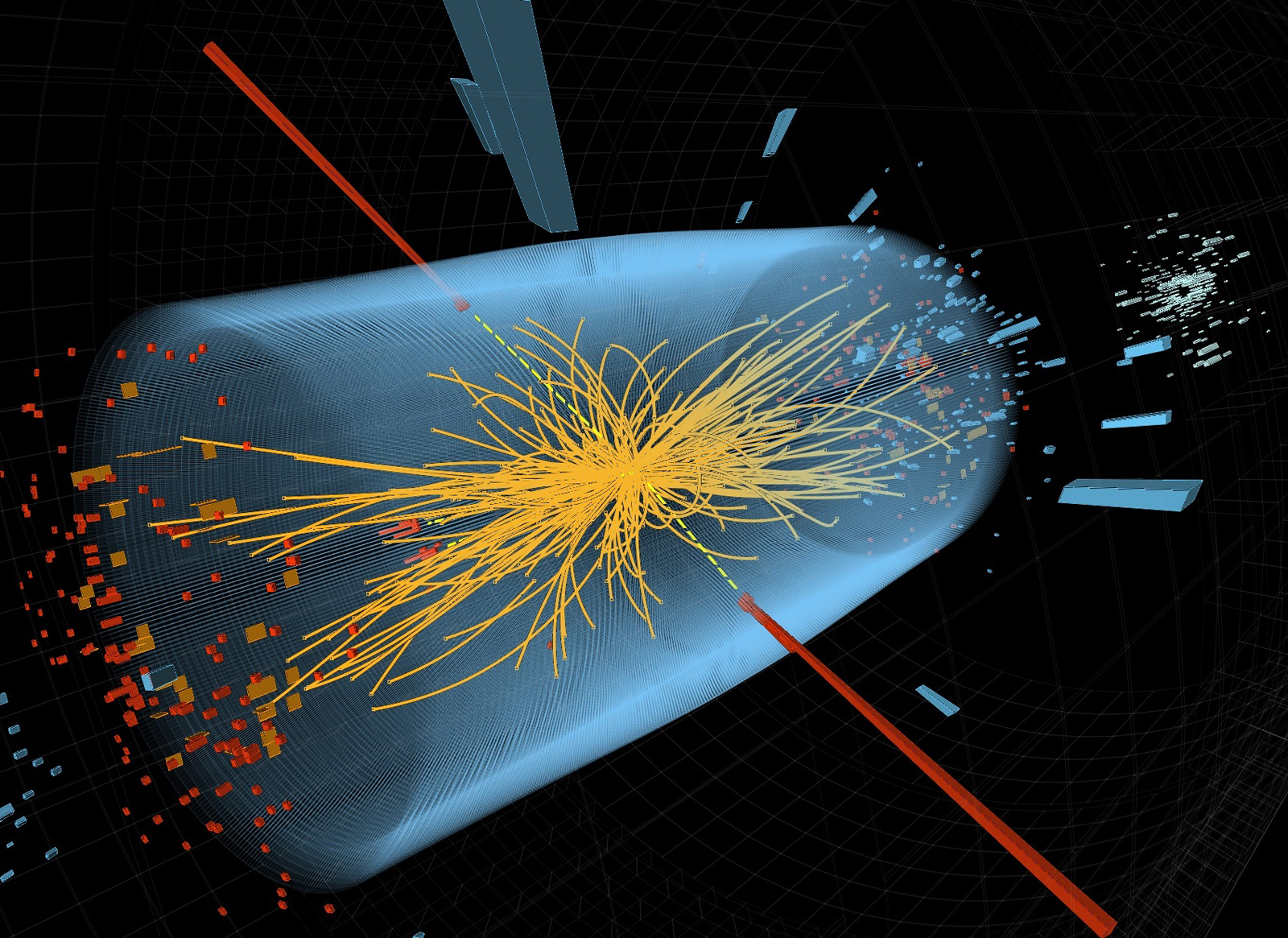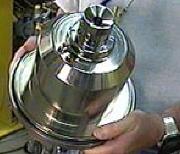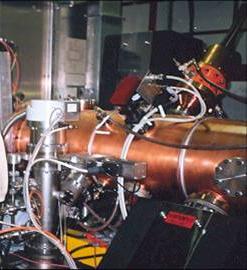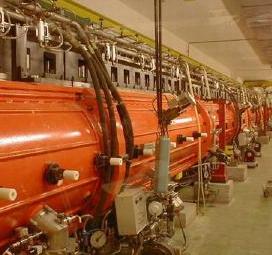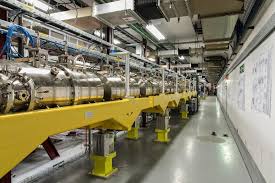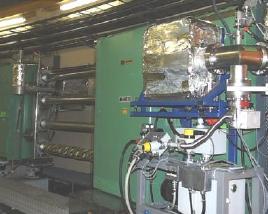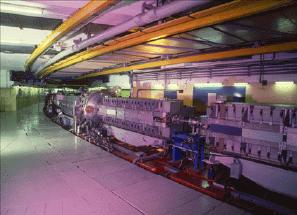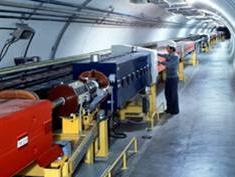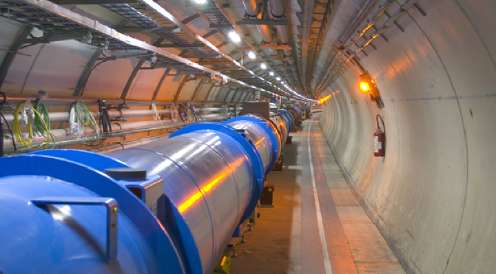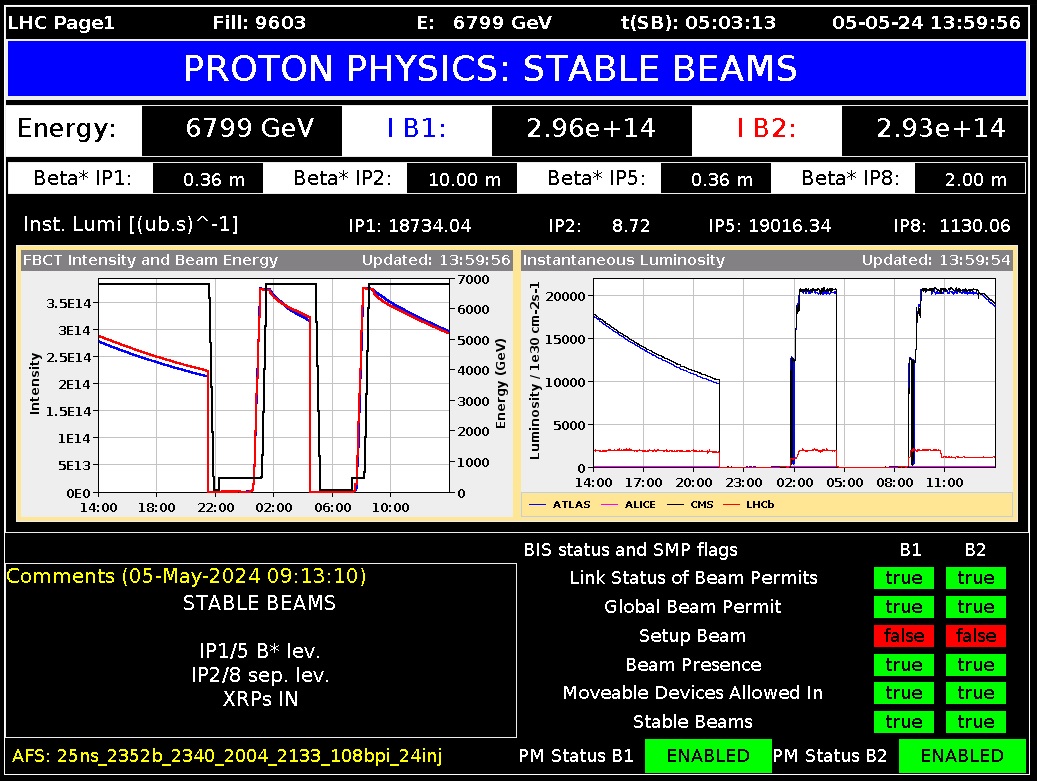Acercándonos al LHC
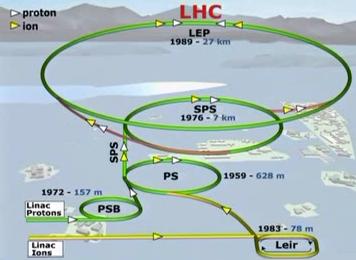
La fuente de protones (proton source) es donde todo comienza en el CERN.
La actual fuente de protones se encuentra en el Linac4 después del Long Shutdown 2 2019-2022. Su funcionamiento es explicado en la sección dedicada al Linac4. En este caso, esta fuente proporciona iones H(-).
Por razones históricas explicamos a continución como era el proceso cuando el Linac2 estaba en funcionamiento.
Para tener una información más precisa de como se producen los haces de protones durante todo el proceso de inyección consúltese aquí.
Para "fabricar" los protones, se inyectaba gas hidrógeno dentro dun cilindro de metal, -Duoplasmatron- para que un campo eléctrico disociara los átomos en protones y electrones. Este proceso daba lugar a un 70 % de protones.
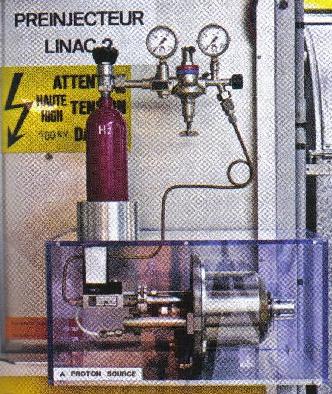
|
Anterior Fuente de Protones |
Cuadrupolo de RF - 90 KeV |
LINAC2 - 50 MeV |
|
LINAC4 - 160 MeV |
||
|
La línea de conexión desde el Linac2 al PSB tenía una longitud de 80 m. 20 cuadrupolos magnéticos focalizan el haz de protones y otros 10 imanes lo curvan y dirigen, tardando menos de un microsegundo en ser inyectados en el acelerador circular de 628 m Proton Synchrotron(PS) donde serán acelerados hasta los 25 GeV.
En el PS los protones pueden o ser acelerados/manipulados/extraidos en 1025 ms, o esperar 1.2 segundos más antes de ser acelerados si forman parte del primer paquete inyectado desde el PSB.
Después son enviados al acelerador circular de 7 km Super Proton Synchrotron (SPS) donde esperarán 10.8, 7.2, 3.6, o cero segundos si forman parte del primer segundo, tercer, o cuarto paquete inyectado desde el PS al SPS. El SPS los acelera hasta 450 GeV en 4.3 segundos, y los envía al LHC.
|
||
|
PS Booster 1.4 GeV |
Proton Synchrotron 25 GeV |
Super PS 450 GeV |
|
Por tanto, el tiempo que va desde la fuente de protones hasta el SPS está entre: 0.53 + 1.025 + 4.3 = 5.86 segundos y 0.53 + 1.2 + 1.025 + 10.8 + 4.3 = 17.86 segundos Los protones son transferidos al LHC (en los dos sentidos), en 12 "superciclos" de 234 paquetes, con un tempo de llenado de 4’20’’. En el LHC los protones tienen que esperar hasta 20 minutos en el nivel energtico de 450 GeV de inyección antes de los 25 minutos necesarios para sere acelerados hasta los 7 TeV. Esos 45 minutos dominan el tiempo de tránsito.
LHC 7 TeV (proton) (2,76 TeV/nucleón iones de Pb) Durante la larga parada LS2 (2019-2022) se han llevado a cabo importantes trabajos de actualización y mejora en la cadena de aceleradores. Más información aquí.
Up-to-date and general information can be found in Meltronx CERN Large Hadron Collider Live Panels (solamente disponible en PC). Los dos haces de partículas permanecen en el colisionador, a máxima enerxía, unas 10 horas , es el llamado "beam lifetime" (tiempo de vida del haz). En ese tiempo, los protones habrán realizado cuatrocientos millones de revoluciones dentro de la máquina. En cada vuelta, un cierto número de protones son perdidos. Esto es debido a la eficacia limitada de los sistemas magnéticos que controlan los haces, interacción con las moléculas del gas residual en los tubos de vacío, interacción culombiana con los protones que vienen en sentido contrario en las zonas de colisión, son algunas de las razones de estas pérdidas de partículas del haz. Además, se produce la interacción, también culombiana, entre los protones que forman los paquetes (bunches) que conforman el haz. Como los protones oscilan ligeramente alrededor de su trayectoria circular, pueden entrar en contacto con otros protones del mismo paquete, pudiendo haber modificaciones en sus momentos lineales que provocan su inestabilidad. Los sistemas multipolares magnéticos no podrán corregir esos cambios, generándose la pérdida de esas partículas en el tubo de vacío. Esto es lo que se conoce como efecto Touschek, en honor al físico austríaco Bruno Touschek. Estos movimientos caóticos pueden llegar al extremo de descontrolar el haz, lo que provocaría trasferencia de energía sobre el sistema criogénico que implicaría la pérdida de las condiciones de superconductividad (quenching), lo que tendría muy negativas consecuencias. Por ello, vaciar los tubos (dumping) se hacer necesario, para inyectar desde el SPS una nueva colección de paquetes en el LHC. Así que después de 10 h de colisiones, el haz de partículas debe ser extraído. El campo magnético de los dipolos magnéticos baja hasta los 0.54 T, permaneciendo así entre 20–40 min. En este período de tiempo el proceso de inyección es repetido y los dipolos vuelven a alcanzar los 8.3 T para iniciarse otro ciclo de colisiones a alta energía. La máquina está diseñada para soportar unos 20000 ciclos de este tipo en 20 anos de vida útil, y además entre 20–30 ciclos térmicos. |
||
|
AUTORES Xabier Cid Vidal, Doctor en Física de Partículas (experimental) por la Universidad de Santiago (USC). Research Fellow in experimental Particle Physics en el CERN, desde enero de 2013 a diciembre de 2015. Estuvo vinculado al Depto de Física de Partículas de la USC como becario "Juan de la Cierva", "Ramon y Cajal" (Spanish Postdoctoral Senior Grants), y Profesor Contratado Doctor. Desde 2023 es Profesor Titular de Universidad en ese Departamento (ORCID). Ramon Cid Manzano, catedrático de Fïsica y Química en el IES de SAR (Santiago - España), y Profesor Asociado en el Departamento de Didáctica de Ciencias Experimentales de la Facultad de Educación de la Universidad de Santiago (España), hasta su retiro en 2020. Es Licenciado en Física, Licenciado en Química, y Doctor por la Universidad de Santiago (USC).(ORCID). |
CERN |
LHC |
NOTA IMPORTANTE
Toda la Bibliografía que ha sido consultada para esta Sección está indicada en la Sección de Referencias
© Xabier Cid Vidal & Ramon Cid - rcid@lhc-closer.es | SANTIAGO (ESPAÑA) |



